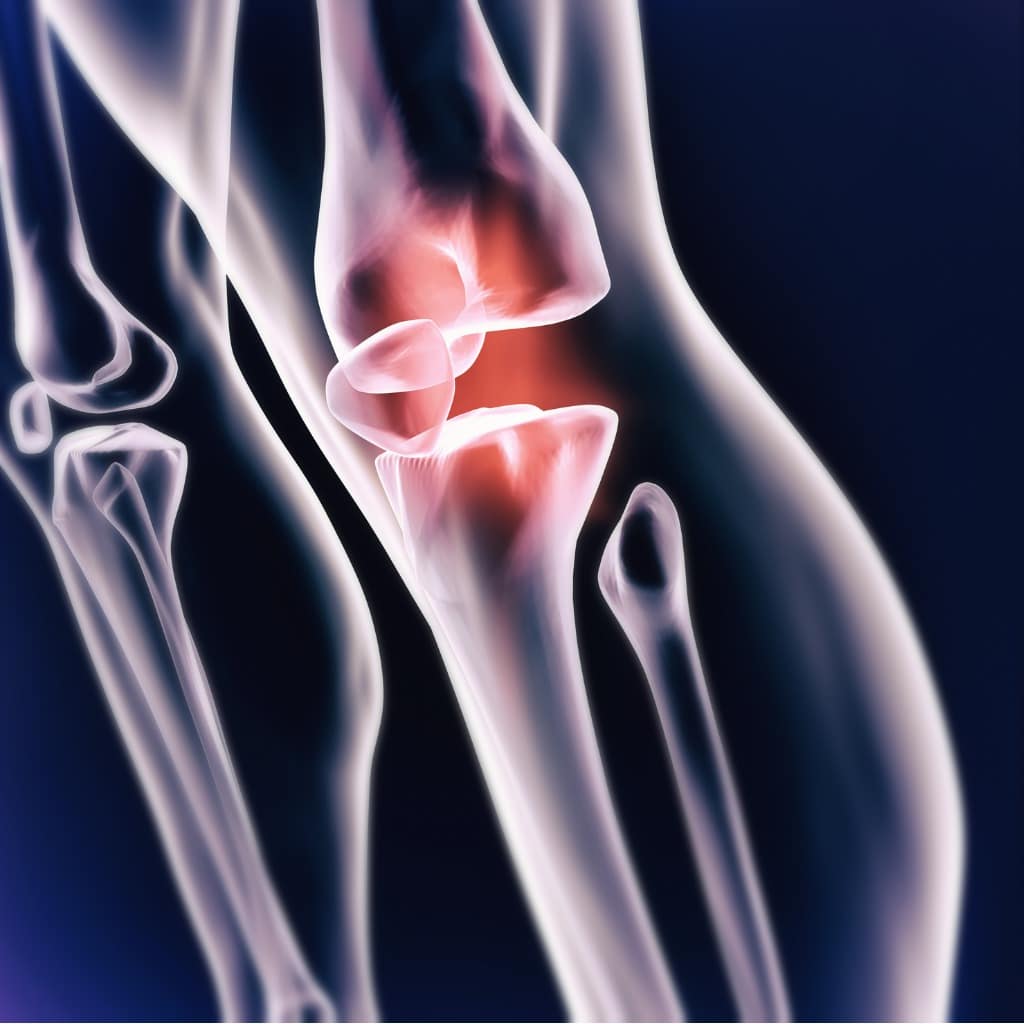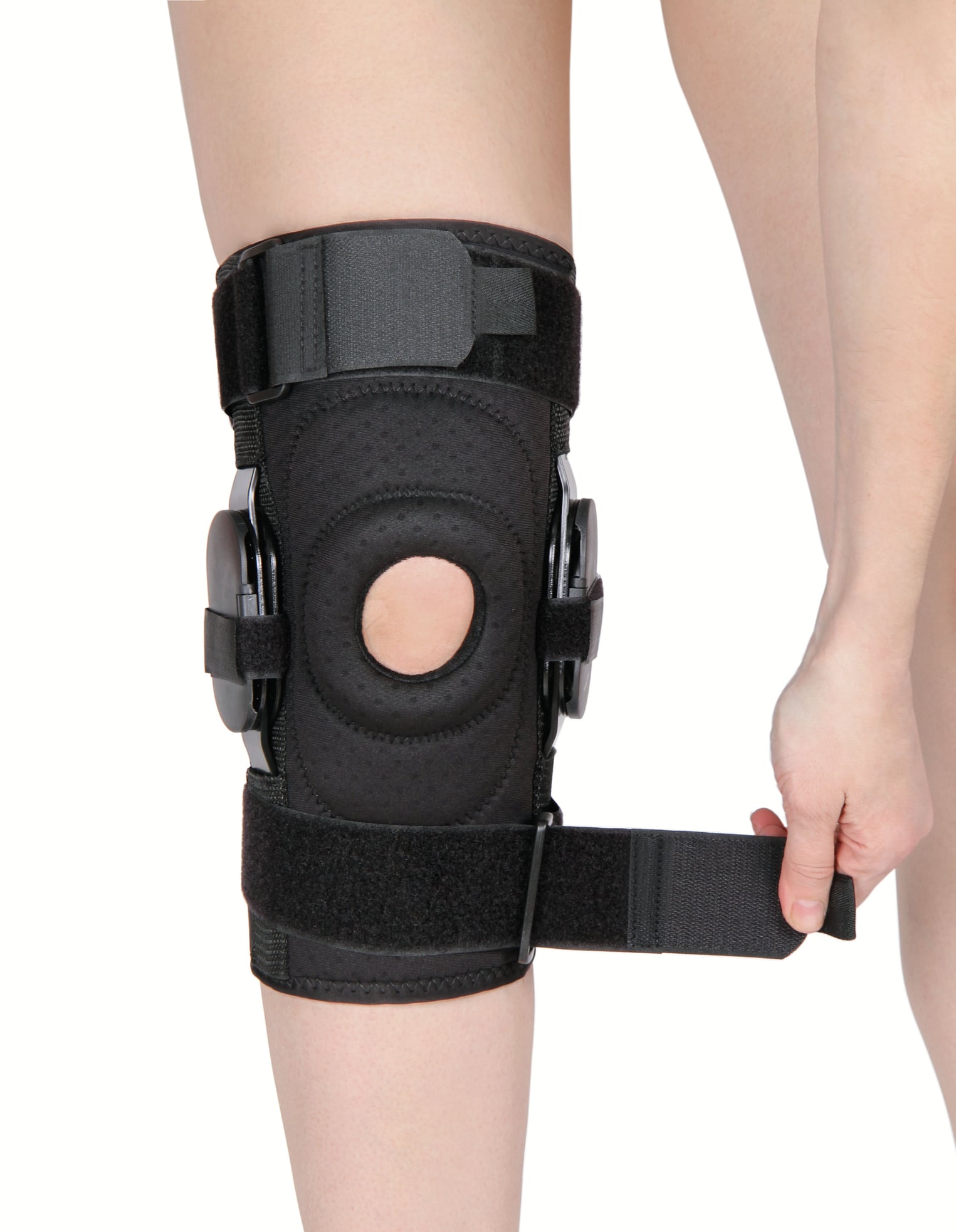What is Patellofemoral Arthritis?

Patellofemoral arthritis is an arthritic condition that affects the kneecap. Behind the kneecap, just along the femoral groove, is articular cartilage. This substance is normally somewhat slippery. In cases of patellofemoral arthritis, this cartilage has begun to deteriorate and become inflamed. The wearing away of fibrous cartilage tissue can eventually eliminate the cushion between bones, leading to pain.
Patellofemoral Arthritis Vs. Osteoarthritis?
This is kind of a game of semantics really. Any wear and tear over time that causes the cartilage in our joints to degenerate are known as osteoarthritis. This is true of every joint in the body as patients pass their 40th birthday. So, when wear and tear due to the aging process and simple long-term use of your knee (which is the main cause of patellofemoral arthritis) are behind your condition you could call it osteoarthritis.
People can confuse osteoarthritis with other forms of arthritis, such as rheumatoid arthritis. They are completely different, however. Osteoarthritis is simply due to wear and tear on a joint over time. Rheumatoid arthritis is an autoimmune disorder where your body’s immune system mistakenly begins to attack your joints.
What Are the Risk Factors for Developing Arthritis in the Knee
There are several risk factors for patellofemoral arthritis. Having a risk factor does not mean you will develop kneecap arthritis. Also, there are cases in which patellofemoral arthritis has developed in the absence of risk factors. It is essential to obtain a full medical evaluation if uncomfortable symptoms occur.
- Age is a common factor in arthritic conditions, including patellofemoral arthritis. Most diagnoses occur in patients over the age of 40.
- Statistics indicate that women are affected more commonly than men.
- A knee injury such as a fractured kneecap can increase the risk of post-traumatic kneecap arthritis.
- Obesity may cause joint degeneration, which could lead to arthritis of the knee and kneecap.
- Certain repetitive movements sustained for long periods can wear down the knee joint, leading to osteoarthritis of the kneecap.
- Health conditions such as gout, rheumatoid arthritis, dysplasia, and Paget’s disease are risk factors for kneecap arthritis.
What Are the Causes of Patellofemoral Arthritis?
There are several factors that may contribute to the development of patellofemoral arthritis. Ultimately, any inflammatory condition or mechanical abnormality of the knee can cause the arthritic condition. Inflammatory diseases such as rheumatoid arthritis may affect the entire knee. A mechanical defect may result from injury to the kneecap, such as dislocation. Damage to the posterior cruciate ligament can also make the knee joint unstable, exerting pressure on the patellofemoral joint.

What Are the Symptoms of Patellofemoral Arthritis?
Pain is the primary symptom of patellofemoral arthritis. Usually, this pain occurs at the front of the kneecap after being triggered by activities such as climbing stairs. However, some people feel kneecap pain for no known reason and even during times of rest. The knee joint may also “crackle” when in motion.
How is Patellofemoral Arthritis Diagnosed?
There are several screening modalities that may be involved in diagnosing patellofemoral arthritis, including:
- Comprehensive medical history and physical examination of the knee.
- X-ray, ultrasound, CT scan, or MRI imaging may be performed to observe the details of the knee joint.
- Bloodwork may be conducted to assess blood count, lupus screening, and rheumatoid factor levels.
- If fluid has accumulated around the knee joint, aspiration may be performed for lab analysis.
Patellofemoral Arthritis Treatment
Non-surgical treatments can be effective for eliminating the need, or at least delaying the need, for later arthroscopy or even knee replacement. Here are the various typical non-surgical treatments for patellofemoral arthritis:
- Rest and activity modification – As you would assume, rest will alleviate the pain, but this isn’t usually an option for people who want to be active. For them, modifying their activities or at least the way they perform certain movements can help. For instance, runners may take up non-impact exercise alternatives, such as swimming.
- Medication – Non-steroidal anti-inflammatory medications such as Advil (ibuprofen) help to reduce pain and inflammation.
- Exercises – Strengthening and stretching exercises help to improve the strength, stability, and flexibility of the knee. These can be the most effective non-surgical treatments, as they help to reduce the pressure on the kneecap. Exercises that place pressure on the kneecap, such as squats and lunges, should be avoided.
- Heat and ice – Heat can reduce pain, and ice helps to reduce inflammation.
- Weight loss – The more weight you place on your arthritic knee, the more inflammation and pain will result. If you are overweight, getting down to your ideal weight can help.
- Corticosteroid injections – Corticosteroid injections, also known as cortisone, help to alleviate pain and inflammation. Dr. Moore usually injects a mix of corticosteroid and local anesthetic directly into the knee joint. This usually provides instant relief, and this can last for a few months. However, cortisone injections cannot be given too frequently or indefinitely, as they can weaken tendons and ligaments.
- Knee braces and taping – Wearing a knee brace or taping your knee before activity can help to support the knee and change the position of the kneecap. This helps take pressure off the worn areas of cartilage on the back of the kneecap.
- Supplements – Although scientific evidence is lacking, some people feel that glucosamine and chondroitin supplements are effective for reducing their knee pain.
Will Wearing A Knee Brace Help?
A knee brace can add support to the knee, and it can change the position of the kneecap. Both of these attributes allow knee braces to take pressure off of the worn areas of cartilage on the back of the kneecap. This can reduce the pain you would normally feel when performing activities without the knee brace on.
Strategic taping with Kinesio tape, which helps maintain a stable position of the knee during activity, can help in a similar way.
How Long Will It Take For My Knee To Heal?
Non-surgical treatments will not heal patellofemoral arthritis, as the damage has already been done to the cartilage and it will not regenerate. The treatments listed above have the goal of alleviating pain and lowering stress on the knee.

Surgical Treatment Options
- Arthroscopy – This minimally invasive procedure is performed through a small incision. Its purpose is to trim and smooth joint surfaces that have become rough due to excessive degradation.
- Kneecap alignment – A minor surgical procedure to tighten or release soft tissues around the knee modify the actual position of the kneecap to reduce pressure and improve comfort.
- Knee replacement – In some cases, only the patellofemoral aspect of the knee joint needs to be replaced. However, patients who experience chronic knee pain due to severe joint deterioration may benefit the most from complete replacement.
Who Is the Ideal Candidate for Knee Surgery?
Ideal candidates for knee surgery are those who suffer from severe knee pain or patellofemoral arthritis that affects daily movements such as walking or standing. Knee surgery is most beneficial for patellofemoral arthritis patients who have not seen improvement in their symptoms despite non-surgical treatments like physical therapy.
Candidates for knee replacements and knee surgeries should be in overall good health and be able to commit to the recovery time required after their treatment. If you are someone who has active sepsis, an active infection, extensor mechanism dysfunction or is medically unstable, this treatment may not be recommended for you.
Are There Any Risks with Knee Surgery?
Although knee surgery is a safe procedure, there are several risks that patients should be aware of when it comes to knee surgery. These risks can include:
- Blood clots
- Wound infection
- Nerve damage
- Issues with your new knee
- Chronic pain or stiffness
- Unstableness when sitting or standing
Recovery from knee surgery will be difficult but not impossible. Physical therapy and certain exercises will be able to help with discomfort involving your new knee. However, if you experience any of the above-mentioned symptoms and see no improvement, contact Dr. Moore immediately.
How Can You Prepare for Knee Surgery?
Preparing ahead of time for your knee surgery can help ensure a safe and successful recovery. Before arriving at your knee surgery appointment, we recommend you do the following:
Consult with your primary doctor to stop any medications that may interfere with your procedure.
Invest in recovery items that will make your healing process easier. After your knee surgery, it will be difficult in the first few weeks to walk around your home. Prepare your home by using the following items to help make movement easier while you recover:
- Walking aids such as crutches, canes, or walkers
- Grab bars or safety rails in places such as the kitchen or bathroom
- Reachers
- Raised toilet seats
To help relieve any pain and discomfort, you may also use:
- Ice packs
- Pillows for elevation
- Comfortable, loose-fitting pants to avoid friction against your surgical site
We also recommend you arrange plans with loved ones to help drive you to and from your surgery, as well as help you with any activities you may need assistance with around your home, especially for your first week in recovery. Following the aftercare guidelines as recommended by Dr. Moore is also essential to a successful recovery.
What Is The Recovery Time After Surgical Treatment?
As for healing times after surgery with Dr. Moore, these vary widely depending upon the procedure. With arthroscopy, patients can be fully recovered in around 12 weeks. There can be some residual pain, but this will fully clear by 6 months in most cases.
Knee realignment that involves only the tightening or release of soft tissues does not involve a long recovery. Within a couple of months, patients have usually regained full function.
After knee replacement, most patients can resume normal daily activities within 6 weeks. It may take from 4-6 months to fully recover and realize the full benefits of the replacement surgery.
See What Our Patients Are Saying:
Click here to read more reviews.
Prevention of Patellofemoral Arthritis
The best way to reduce the risk of patellofemoral arthritis is to protect the knee joint as a whole. Protective measures include:
- Maintaining a healthy body weight to avoid exerting excessive pressure on the knee joint.
- Maintaining a healthy body weight to avoid exerting excessive pressure on the knee joint.
- Wearing protective gear during sports activities where there is a potential for direct contact or other injuries.
- Stretching can decrease inflammation and prevent stiffness of the knee joint.
Schedule Your Consultation Today
We proudly serve patients from the Pinehurst area with personalized care that improves comfort and quality of life. For more information on our services or to schedule your visit with our friendly team, contact us at 910.295.0224.


